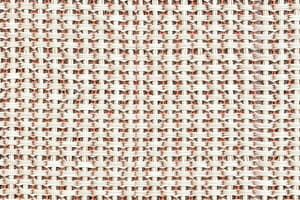Podcast
Questions and Answers
The WEFT THREAD is the vertical thread in weaving.
The WEFT THREAD is the vertical thread in weaving.
False (B)
Weft threads are responsible for creating patterns and designs in the weave.
Weft threads are responsible for creating patterns and designs in the weave.
True (A)
Warp threads are woven over the weft threads.
Warp threads are woven over the weft threads.
False (B)
The main purpose of the weft thread is to secure the warp threads in place.
The main purpose of the weft thread is to secure the warp threads in place.
In weaving, the weft thread moves horizontally while the warp thread moves vertically.
In weaving, the weft thread moves horizontally while the warp thread moves vertically.
Pagkyupis involves folding three strands together in horizontal and vertical pairs.
Pagkyupis involves folding three strands together in horizontal and vertical pairs.
The taytay is the frame that determines the final size and length of the mat.
The taytay is the frame that determines the final size and length of the mat.
The final step in making a mat is known as the gutab.
The final step in making a mat is known as the gutab.
Both Badjao and Samals use cotton for their mat designs.
Both Badjao and Samals use cotton for their mat designs.
The patterns on the mats can include shapes, multi colored squares, checkered, and zigzag lines.
The patterns on the mats can include shapes, multi colored squares, checkered, and zigzag lines.
Flashcards are hidden until you start studying
Study Notes
Weaving Basics
- WEFT THREAD is the horizontal thread woven over and under the vertical warp threads, responsible for creating patterns and designs in textiles.
Pagkyupis Process
- Pagkyupis involves folding four strands of material together, arranged in horizontal and vertical pairs, essential for mat weaving.
Frame Structure
- The taytay serves as the frame for the mat, determining both the final size and length of the banig, which is a traditional mat.
Final Touch
- Gutab refers to the final step of mat-making, where unwanted and excess strands are cut away to achieve a polished look.
Cultural Materials
- The Badjao and Samals communities utilize pandan leaves for crafting mats, resulting in diverse designs including shapes, multi-colored squares, checkered patterns, and zigzag lines.
Studying That Suits You
Use AI to generate personalized quizzes and flashcards to suit your learning preferences.





